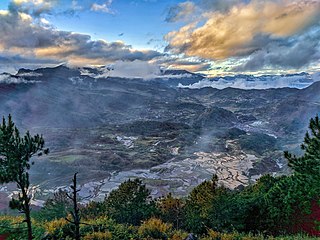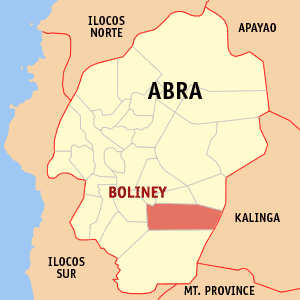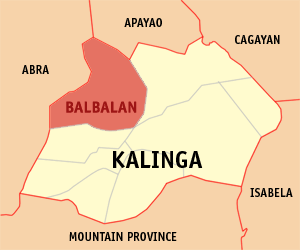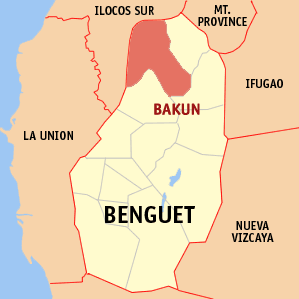Tanudan | |
|---|---|
| Municipality of Tanudan | |
 Map of Kalinga with Tanudan highlighted | |
 | |
Location within the Philippines | |
| Coordinates: 17°18′N121°14′E / 17.3°N 121.23°E Coordinates: 17°18′N121°14′E / 17.3°N 121.23°E | |
| Country | |
| Region | Cordillera Administrative Region (CAR) |
| Province | Kalinga |
| District | Lone District |
| Barangays | 16 (see Barangays) |
| Government | |
| • Type | Sangguniang Bayan |
| • Mayor | Jaedicke Rhoss P. Dagadag |
| • Vice Mayor | Joseph B. Cosidon |
| • Congressman | Allen Jesse C. Mangaoang |
| • Electorate | 9,035 voters (2019) |
| Area | |
| • Total | 307.55 km2 (118.75 sq mi) |
| Elevation | 534.8 m (1,754.6 ft) |
| Population (2015 census) [3] | |
| • Total | 9,534 |
| • Density | 31/km2 (80/sq mi) |
| • Households | 1,568 |
| Economy | |
| • Income class | 4th municipal income class |
| • Poverty incidence | 38.55% (2015) [4] |
| • Revenue (₱) | 74,086,051.41 (2016) |
| Time zone | UTC+8 (PST) |
| ZIP code | 3805 |
| PSGC | |
| IDD : area code | +63 (0)74 |
| Climate type | tropical rainforest climate |
| Native languages | Kalinga language Balangao Ilocano Tagalog |
| Website | www |
Tanudan, officially the Municipality of Tanudan is a 4th class municipality in the province of Kalinga, Philippines. According to the 2015 census, it has a population of 9,534 people. [3]
Contents
The town is known for Mount Binarbatan. Legend tells that the supreme god of the Kalinga people went into the mountain to hunt but was irritated due to the noises made by the birds, so he ordered the birds to be quiet. When he was done hunting, he forgot to revoke his order from the birds, and thus, the mountain kept silent for all of eternity. [5] Another popular place is the Lubo Village where houses are intact and strategically surrounded with rice terraces. Legend says that a brave warrior challenge god and that no one is stronger than him. So god started building dam that is made of rocks, when the water is high enough, god released the water through a whole called "lubu" that flooded the warrior and his family. The people from Ga-ang and Dacalan gathered together with the remnants of the relatives of the said warrior and saw that the flooded soil was good for planting rice, so they started to cultivating the land and named the village "Lubo".




















